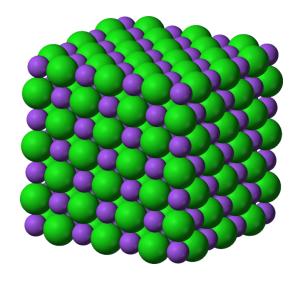Lithium-(2H)hydrid Chemische Eigenschaften,Einsatz,Produktion Methoden
R-S?tze Betriebsanweisung:
R11:Leichtentzündlich.
R14:Reagiert heftig mit Wasser.
R34:Verursacht Ver?tzungen.
S-S?tze Betriebsanweisung:
S16:Von Zündquellen fernhalten - Nicht rauchen.
S26:Bei Berührung mit den Augen sofort gründlich mit Wasser abspülen und Arzt konsultieren.
S36/37/39:Bei der Arbeit geeignete Schutzkleidung,Schutzhandschuhe und Schutzbrille/Gesichtsschutz tragen.
S45:Bei Unfall oder Unwohlsein sofort Arzt zuziehen (wenn m?glich, dieses Etikett vorzeigen).
S7/9:Beh?lter dicht geschlossen an einem gut gelüfteten Ort aufbewahren.
Chemische Eigenschaften
Lithium deuteride at ambient has the NaCl (rock salt) structure: two interlaced FCC lattices; 5 eV band gap: single crystal samples are transparent.

Lithium deuteride come in single crystals, (packed) powders, or pressed into cakes.
Verwenden
Lithium deuteride is an isotopically labeled derivative of lithium hydride, Used in thermonuclear fusion; Used as the explosive in the hydrogen bomb and used for hydrogen storage and also in the synthesis of rocket fuel.
synthetische
Lithium deuteride has been prepared by the direct combination of lithium and deuterium at 700°, the deuterium having been obtained from the oxide by the use of magnesium.
The laboratory preparation of lithium deuteride and lithium aluminium deuteride
Allgemeine Beschreibung
Lithium deuteride (LiD) is a stable isotopic compound that is commonly used in deuterium storage and energy storage applications because of its high melting point, low density, high deuterium concentration, and exceptional thermal stability in both vacuum and inert gases. It can also be used as a potential raw material for the synthesis of organic deuterides, deuterated solvents, and deuterated polymers.
Lithium-(2H)hydrid Upstream-Materialien And Downstream Produkte
Upstream-Materialien
Downstream Produkte

